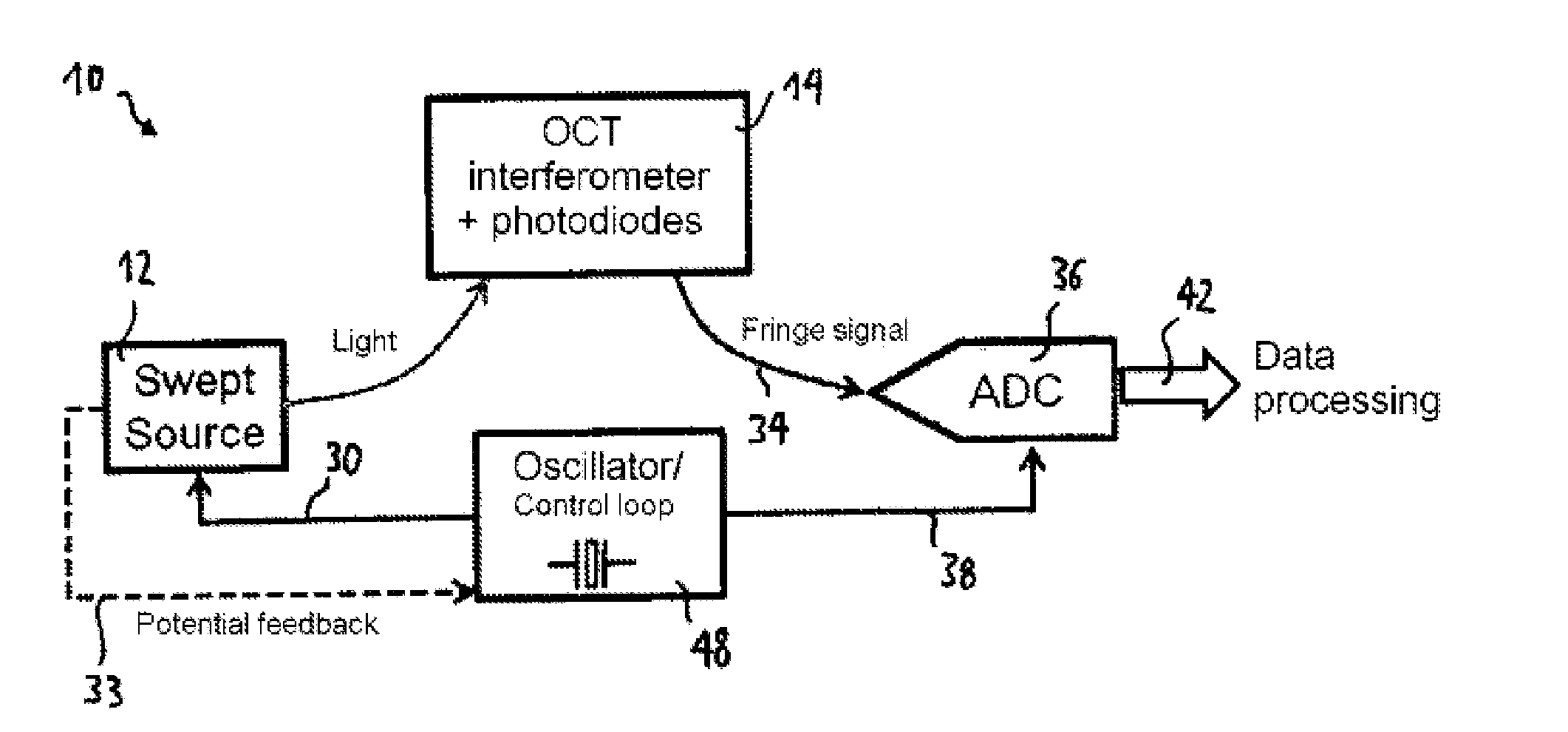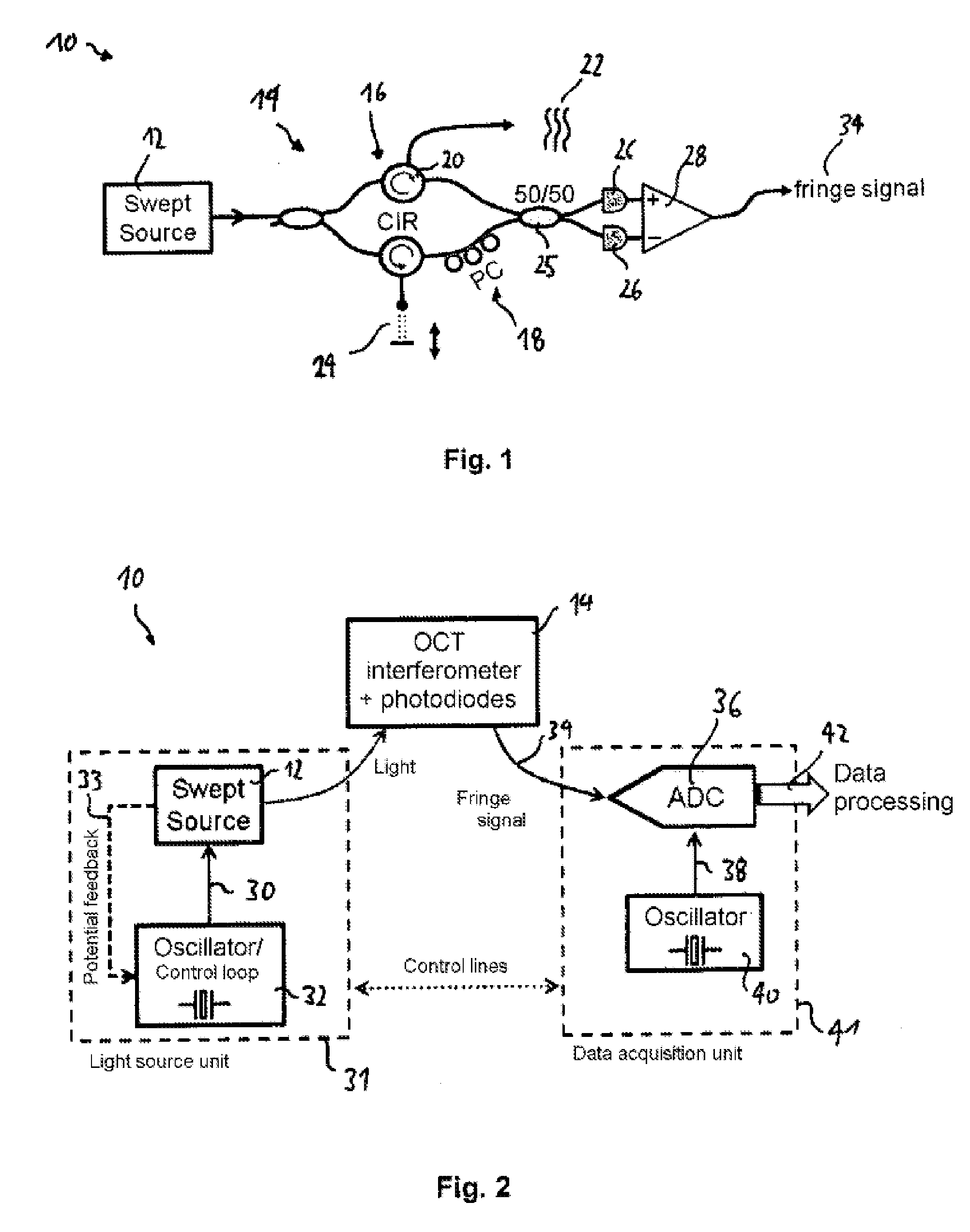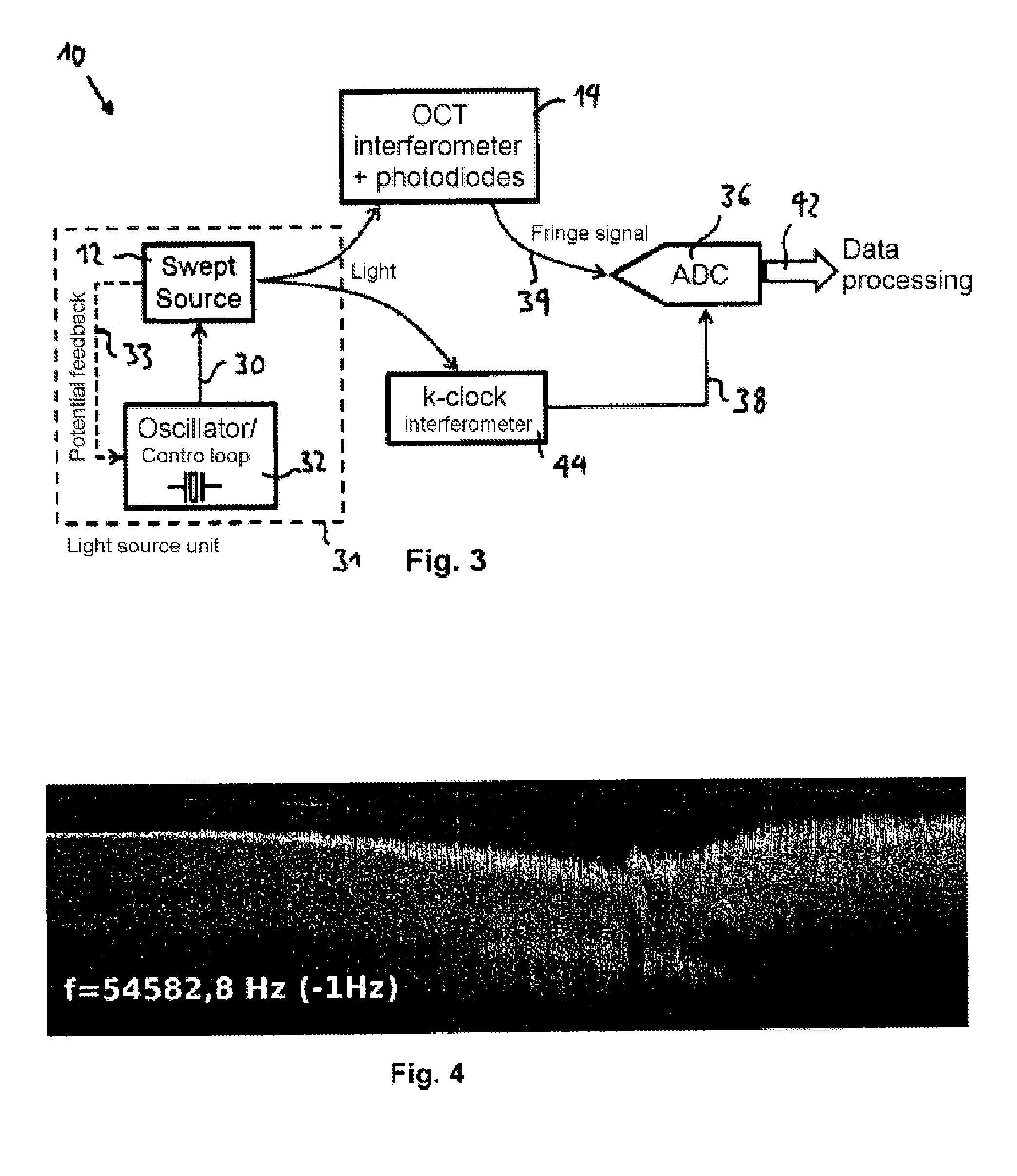Swept source oct system and method with phase-locked detection
a phase-locked detection and swept source technology, applied in the field of medical imaging, can solve the problems of increasing blurry 2d image in fig. 4, position shift, surprising severe blurriness problems, etc., and achieve the effect of high wavelength sweep ra
- Summary
- Abstract
- Description
- Claims
- Application Information
AI Technical Summary
Benefits of technology
Problems solved by technology
Method used
Image
Examples
Embodiment Construction
[0066]FIG. 6a shows the schematic design of a swept-source OCT system 10 according to the invention. The swept-source OCT system essentially consists of the same components as the system in FIG. 2, wherein these components are not described anew and identified by the same reference symbols. The essential difference can be seen in that a phase-locked loop (PLL) 46 is provided, by means of which a detection clock signal 38 is derived from the sweep control signal 30, wherein this detection clock signal has a frequency that amounts to a multiple of the frequency of the sweep control signal 30 and is phase-locked therewith. For example, the sweep control signal 30 may have a frequency of 1 MHz that corresponds to the repetition rate fsweep of the tunable light source 12, whereas the detection clock signal may have a frequency of 1 GHz. In this case, a phase-locked detection clock signal 38 is derived from the sweep control signal 30 with the aid of the PLL 46, wherein the frequency of t...
PUM
 Login to View More
Login to View More Abstract
Description
Claims
Application Information
 Login to View More
Login to View More - R&D
- Intellectual Property
- Life Sciences
- Materials
- Tech Scout
- Unparalleled Data Quality
- Higher Quality Content
- 60% Fewer Hallucinations
Browse by: Latest US Patents, China's latest patents, Technical Efficacy Thesaurus, Application Domain, Technology Topic, Popular Technical Reports.
© 2025 PatSnap. All rights reserved.Legal|Privacy policy|Modern Slavery Act Transparency Statement|Sitemap|About US| Contact US: help@patsnap.com



